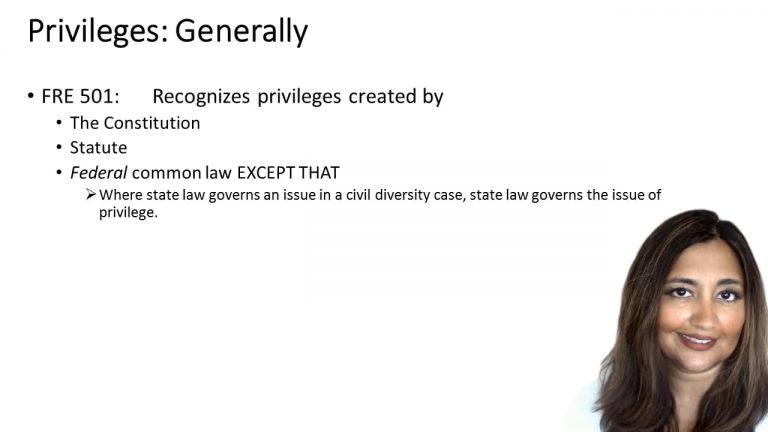SmartBrief
Confirm favorite deletion?
Evidence Keyed to Park
Prink v. Rockefeller Center, Inc.
Citation:
48 N.Y.2d 309 (1979)Facts
Plaintiff is the administratrix of the estate of her husband, Robert Prink, who was an associate of a law firm whose offices were at 30 Rockefeller Plaza in New York City. On March 1, 1976, he was found death on the sixth floor setback of the building. There were no eyewitnesses, but the deputy chief medical examiner noted on Mr. Prink’s death certificate that Dr. Thomas Doyle, Mr. Prink’s psychiatrist, had reported to him that Mr. Prink had been acutely tense and depressed. Plaintiff commenced this action against defendants, the owners and architects of 30 Rockefeller Center. She admitted that after her husband’s death she had spoken with Dr. Doyle, but refused to disclose the content of the conversation, claiming privilege. Defendants filed a motion to compel plaintiff to testify concerning the content of her conversations with Dr. Doyle.
Only StudyBuddy Pro offers the complete Case Brief Anatomy*
Access the most important case brief elements for optimal case understanding.
*Case Brief Anatomy includes: Brief Prologue, Complete Case Brief, Brief Epilogue
- The Brief Prologue provides necessary case brief introductory information and includes:
Topic:
Identifies the topic of law and where this case fits within your course outline.Parties:
Identifies the cast of characters involved in the case.Procedural Posture & History:
Shares the case history with how lower courts have ruled on the matter.Case Key Terms, Acts, Doctrines, etc.:
A case specific Legal Term Dictionary.Case Doctrines, Acts, Statutes, Amendments and Treatises:
Identifies and Defines Legal Authority used in this case.
- The Case Brief is the complete case summarized and authored in the traditional Law School I.R.A.C. format. The Pro case brief includes:
Brief Facts:
A Synopsis of the Facts of the case.Rule of Law:
Identifies the Legal Principle the Court used in deciding the case.Facts:
What are the factual circumstances that gave rise to the civil or criminal case? What is the relationship of the Parties that are involved in the case.Issue(s):
Lists the Questions of Law that are raised by the Facts of the case.Holding:
Shares the Court's answer to the legal questions raised in the issue.Concurring / Dissenting Opinions:
Includes valuable concurring or dissenting opinions and their key points.Reasoning and Analysis:
Identifies the chain of argument(s) which led the judges to rule as they did.
- The Brief Prologue closes the case brief with important forward-looking discussion and includes:
Policy:
Identifies the Policy if any that has been established by the case.Court Direction:
Shares where the Court went from here for this case.
Topic Resources
Topic Outline
Topic Refresher Course
Topic Charts & Notes

 4m 37s
4m 37s